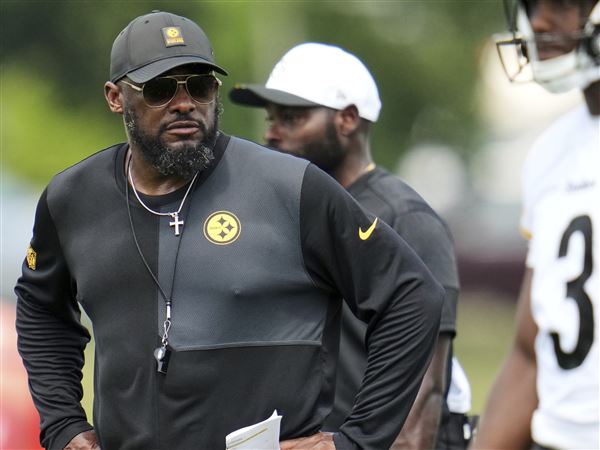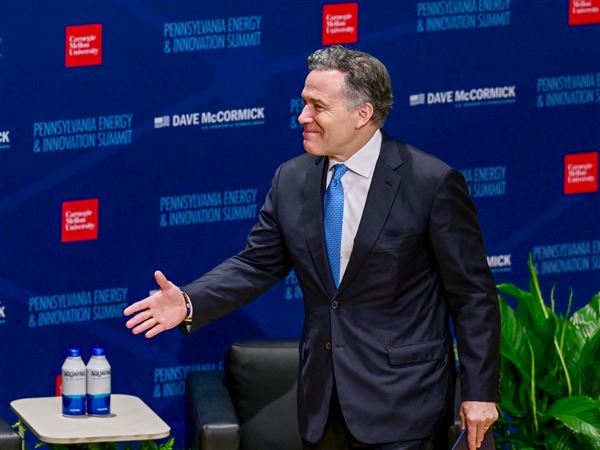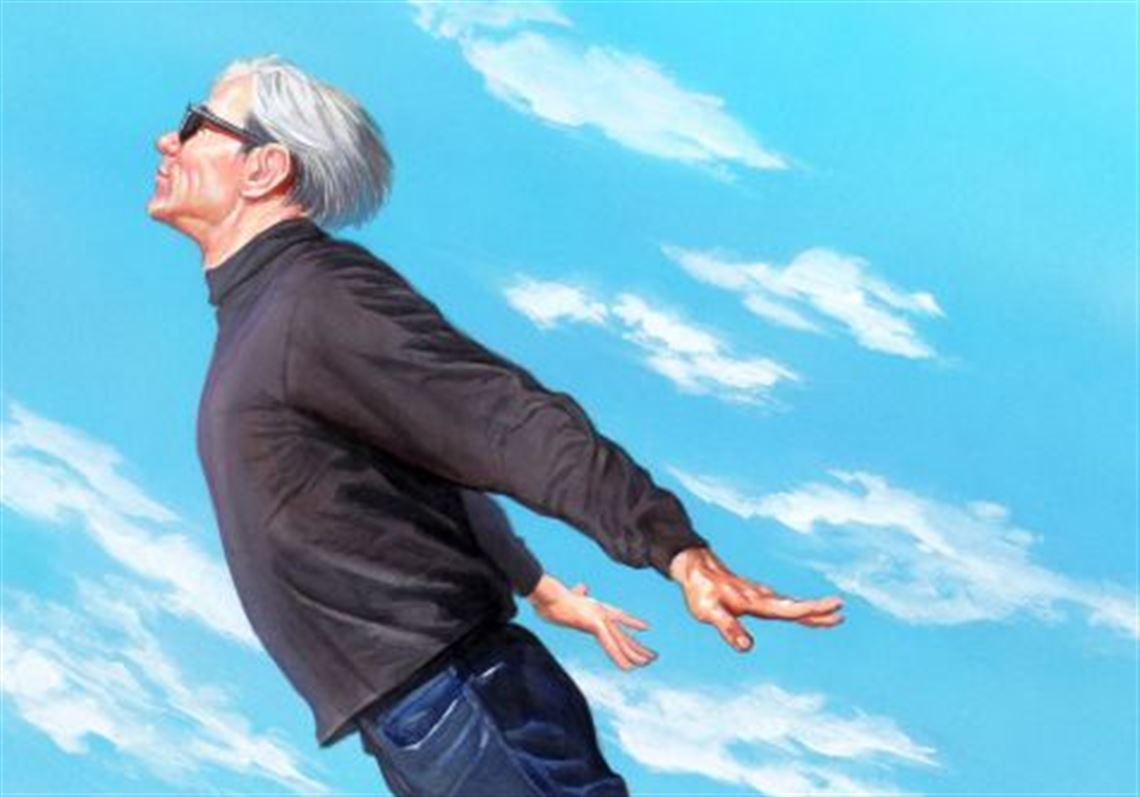Alex Ross put crayon to construction paper at age 4 and has been unstoppable -- some might even say superhuman -- in his trajectory to becoming The Norman Rockwell of Comic Books, a moniker he has worn proudly since the 1990s.
He has painted 'em all for DC and Marvel, from Superman to Spider-Man, The Joker to The Green Goblin -- thus the title of his first museum exhibition, "Heroes and Villains: The Comic Book Art of Alex Ross," which opens in 5,500 square feet of The Andy Warhol Museum Saturday.
And it won't stop here.
Where: The Andy Warhol Museum, North Side.
When: Saturday through Jan. 8.
Special event: Saturday opening celebration with Alex Ross, $35 nonmembers, $30 members. warhol.org or 412-237-8300.
When The Warhol curator of exhibitions Jesse Kowalski visited the Norman Rockwell Museum in Stockbridge, Mass., to gather some contextual artworks for the Ross event, folks there "immediately got the connection," Mr. Kowalski said. After it finishes in Pittsburgh, the exhibition will reside for a while at the Rockwell Museum, home of one of the artists who inspired Mr. Ross' illustrative style and energy.
Among the pieces in the exhibition is a crayon drawing of Saturday-morning TV superheroes (super is spelled "SUPPER") by then 4-year-old Alex, who was already in touch with his passion and showing signs of following his mother into the art biz.
Like his mother, fashion illustrator Lynette Ross, Alex attended Chicago's American Academy of Art, then went his own way to become a storyboard artist in an advertising firm. The full-time job allowed him the luxury of continuing to pursue a career in comic books. And he did it his way: "I was the guy who decided I want to be known as the superhero painter, because no one had kind of staked out that ground and made that their 100 percent reputation."
Among the exhibition's treasures is a resin bust of Batman that would be cool in itself, considering Pittsburgh's connections to the Caped Crusader, but it becomes a monument to Mr. Ross' precise process when he tells its origin story.
"I had already done an entire series where I'd used a model without having any kind of accoutrements and I'd made a couple of little pieces out of paper to use as references, but I decided with a full graphic novel I was doing on Batman, I wanted to have a costume I could study down to the tiniest detail and fold of cloth. So the biggest thing to accomplish was to have a conception of what that mask would be. So I did what they do for moviemaking. I got a cast of my model's head ... and a mold was taken of that that was later filled with stretchable rubber. And the model was later able to wear a stretchable mask that matched my art style of what I hoped to interpret it as."
Over the years of painting, the 41-year-old artist has had a seamstress create costumes for his models, who include a square-jawed advertising colleague and Alex Ross himself, who is responsible for The Joker's demented smile. The meticulous prep work is one more artist's trait he shares with Mr. Rockwell.
The Warhol Museum's walk through Mr. Ross' career includes paintings that became pages from his earliest success, the "Marvels" series published in 1994 that celebrates characters from the birth of The Human Torch in 1939 to the X-Men's origins in the 1960s. In his foreword to the book collection, character creator Stan Lee wrote, "Never before, not until [writer] Kurt Busiek and Alex Ross created 'Marvels,' had [the Marvel universe] seemed quite so undeniably authentic, so unquestionably credible, so eminently compelling."
Today, Mr. Ross and his family make their home in Chicago, surrounded by his works. Mr. Kowalski described taking paintings off the walls of the house or from storage, while Mr. Ross said there will be at least one piece in the exhibition that's a copy of the original. The work he described as "my equivalent of my Sistine Chapel painting" was created in 1998 and includes dozens of characters penciled by George Perez.
"He created my favorite comic when I was a kid, I was 15 years old. It was the universe-shattering and reforming of DC Comics at that time," he said of 1985's anniversary event, "Crisis on Infinite Earths."
"It had every character that appeared in their entire 50-year history making their way into that series and so for the accomplishment of the painting, I challenged the penciler to draw every single one of those characters into one giant composition. ... I did nothing else but that painting 8 to 10 hours a day for a whole month, and I loved it. I was fully invested in this because it was a payoff of a part of my youth. And given the amount of effort and amount of detail because there's countless little tiny figures in it that I painted by hand, to have it gone is hard to separate with, so ... I just had to have it here."
So that original remains beside the entryway to his home, while The Warhol will display a "deluxe slipcase." On other originals, you'll be able to see the painter's hand at work, or as he puts it, "the roughness of the execution. ... I may try my damndest to make the stuff as much like a photograph in some cases, but there's only so far I can accomplish that goal. There are a great many photorealist painters who have taken their originals to the point where you can stand so close to them and still not understand how a human hand created it. Mine are not quite so. Mine have more the quicker, slap-dash quality of something that had an impetuous energy to it that was trying to get done, get more."
Mr. Ross' bold watercolor and gouache works exude an energy that pushes beyond the boundaries of the page and virtually leap off his much larger canvases. He can tone it down, too, as he did for some haunting black and white images in "Kingdom Come" (1996).
Describing his style as "heightened realism" is a good way to put it, he said. He starts by using models or photographic reference points for all of his subjects, including the swans in flight that became the backdrop for a poster of a flying Andy Warhol, created just for this exhibition. It also references the Saturday Evening Post cover, circa 1928, of a flying Uncle Sam. Rockwell's subject has makeshift wings, while Warhol is self-propelled, superhero style.
Mr. Ross has been known to create without a commission for pitches that may never come to fruition or may happen years later -- sometimes, a guy's just gotta paint what's on his mind. He did that with a sketch of Batgirl (the original is in the exhibition) that sat for years until DC decided to do a Batwoman series and use Mr. Ross' earlier design for the character.
In Mr. Ross' reality, there's often a crossover between childhood dreams and influences and making a living as an adult.
Among upcoming commissions, "I'm going to do my first 'Star Trek' painting soon for a licenser that's selling a model kit. So these odd things are still intersecting with my life now. I've done a whole lot of Marvel and DC, but I've gotten to do a lot of other things that have been just as big a part of my life, like the character Flash Gordon. I'm working on a series of covers for a project utilizing that influence."
Having connected with so many beloved characters, he said he'd love to do an Alex Ross original character, perhaps when the market is more friendly to something new. These days, the comic-book mantra seems to be about multimedia usage, from digital comic books to multimillion-dollar film franchises.
"That's been the status quo for a while, to think about all these other applications. I think in some ways, everything I have in mind is commercially minded, but at the same time I'd like to have the pretense of being an artiste of some sort, where I might have a book that's worth reading for the sake of what story it tells. ... You'd like to make sure it's the one thing it's meant to be, which is a story that affects the reader and has that singular experience, and not rely on the hope that Hollywood comes calling."
Not that Hollywood hasn't come calling before. Mr. Ross designed the 2002 poster for the Academy Awards ceremony, and the "Spider-Man 2" opening sequence recaps the first film through his paintings. The man who cites Epic Illustrated and Heavy Metal magazine among his illustration influences also has had one foot in the music world, having created album covers for the band Anthrax.
For now, it's The Andy Warhol Museum that's come calling, and when the subject is comic books, the museum's namesake has a lot to contribute. There's a photograph of the Velvet Underground's Nico and Mr. Warhol as Batman and Robin, a 1981 screenprint titled "Myths: Superman," and tantalizing clips from an unfinished 1964 film, "Batman/Dracula." One case holds some of Mr. Warhol's comics collection, on display for the first time (he seems to have had a thing for Lois Lane titles).
Having his first museum exhibition at The Warhol "is a very good fit, it makes a lot of sense," Mr. Ross said by phone from his home in Chicago. "And of course the ironic part of this is the show will be traveling from The Warhol, which is the pop culture end of what it is I do and connect with, to the Rockwell, and that of course a very major influence in my art style."
Just the thought of his work side-by-side with influences such as Mr. Rockwell or J.C. Leyedecker, an advertising illustrator from the 1920s, turns Mr. Ross at once humble and fanboy of those artists he admires. He notes that they worked in oils, a medium that raises the stakes when trying to produce photo-realistic works -- works that blur the line between labels such as "illustration" and "art."
"I know by seeing some of these originals by these gentlemen before, there's some stunning work," Mr. Ross said. "No single work of mine is ever going to approach the same level of quality execution of a Rockwell or a Leyedecker. They just produced such gorgeous originals, that it's a crime to think of them being looked down on by any kind of fine-art community."
Until he arrives in Pittsburgh for the show's opening, Mr. Ross' only connection to The Warhol was seeing it in "oh, that Jay Baruchel movie ..."
Could it be "She's Out of My League," which had a party scene at the museum?
"That's it. ... I'm a big fan of Jay Baruchel movies and it was a weird thing to watch it and think, 'Wow, I'm going to be there in a few months.' "
For a guy whose aspiration was to be the painter of superheroes, there's quite a bit of "wow" factor in having an exhibition at The Warhol.
"A museum is a permanent part of the culture, and to be a part of that is to be indoctrinated into a world of, like, 'You made it, kid.' "
First Published: September 29, 2011, 8:00 a.m.


















